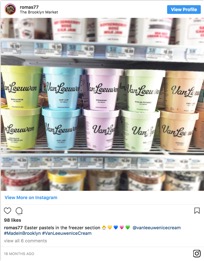How brand stories on packaging influence consumer behavior and purchase intent
Relevant topics Archive, Advertising
Once upon a time, our ancestors would gather around a fire to tell stories, sharing their imaginations and lessons with others. Fast-forward to today and we are still sharing stories, but accompanied by smartphones instead of fires.
Consumer expectations today
In today’s world of lengthy ingredient lists, required labels and brand noise, consumers desire products with complete simplicity and zero overwhelming attributes. As a result, we now have a trend where products avoid over-the-top explanations and emphasize just the main ingredients. The minimal ingredients and fresh connotation remain driving factors in the purchase decision-making for consumers. Now, the challenge for brands is figuring out the extent to which a brand story will influence consumer behavior.
Effect of brand stories on packages
Neuromarketing research has shown that short brand stories on packaging, specifically on fast-moving consumer good (FMCG) packages, have a positive impact on consumers’ behavioral responses and intentions to the brands, compared to packages with no brand stories or content in a list-format. Short brand stories (less than 100 words) provide consumers with enough content to transport them into the world of the story. In addition, word of mouth is more likely to occur when there is a short story on the packages.
In plain terms, short and sweet will gain consumer attention. You can still leave a positive impression on consumers without writing a novel on the packaging. The stories that leave positive impressions will then be stored in the consumers’ memories. When it’s time to make a decision on which brands to purchase or refer, consumers rely on memories to help make that decision. And according to behavioral economist, Daniel Kahneman, it’s the memory of the experiences that drive decision, not the actual experience itself. By providing a short brand story, specifically with a positive ending, the brand experience will be stored as a positive memory for future reference.
Case: Van Leeuwen Ice Cream
Take a look at one of my favorite ice cream brands, Van Leeuwen Ice Cream. Van Leeuwen Ice Cream is based in Brooklyn, New York that focuses on fresh ingredients with vegan options. Their original packaging was overwhelming and I probably wouldn’t have tried it if it weren’t for the single scoops from their ice cream trucks. However, they recently redesigned their packaging that provides clean branding in the front with a short brand story on the back. Their packaging became such a hit that consumers began to Instagram the ice cream pints in grocery stores!
So what happened? Their redesigned packaging led to an increase in sale by 50% where 80% of their new customers were coming from Instagram. While research does not show a significant correlation between short brand stories and purchase intent, brand experiences that are ‘Instagramable’ will naturally welcome new customers because of how consumers create memories and make decisions. In other words, these shared experiences on social media provide viewers a taste of what the brand experience is like: positive and delightful.

Short brand stories on FMCG packages should be used as a brand extension that adds flavor to the product packaging. The brand story should end on a sweet note, allowing consumers to remember the experience as a positive memory for future references. The overall design of an FMCG package should also be appealing to the consumer’s eye to initially grab a consumer’s attention.
Take Home Points
- Keep it short and sweet: use less than 100 words for brand stories on packaging
- Transport your audience into your world through your brand story with a positive aftertaste
- Invite today’s consumer with an ‘Instagramable’ brand story/package experience
Further Reading
-
Why Nobody Would Drink a Coke Zero From a White Can
Imagine walking through your local supermarket to buy some fruits and vegetables. We are automatically drawn to that intense red tomato because it looks a lot juicier and tastier than the ones that are pale red.
Sounds familiar? It probably is, because we learned from a young age that fruits and vegetables with richer colors are ripe and have a greater quality. This does not only apply to fruits and vegetables, but also to other food packages. We are, for example, subconsciously scanning for light colored packages when we would like to have something healthy. Our brains associate light colors with healthy options. However, this positive health indication does not always work out as positive as we expect it to be...


